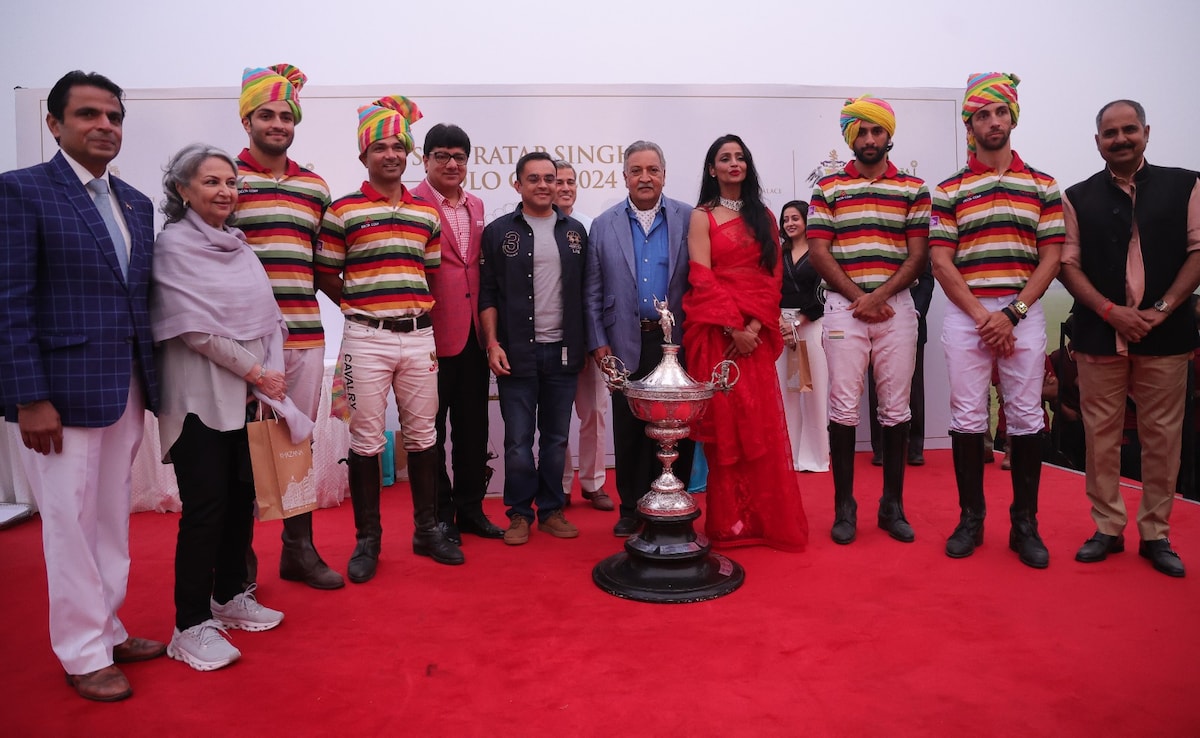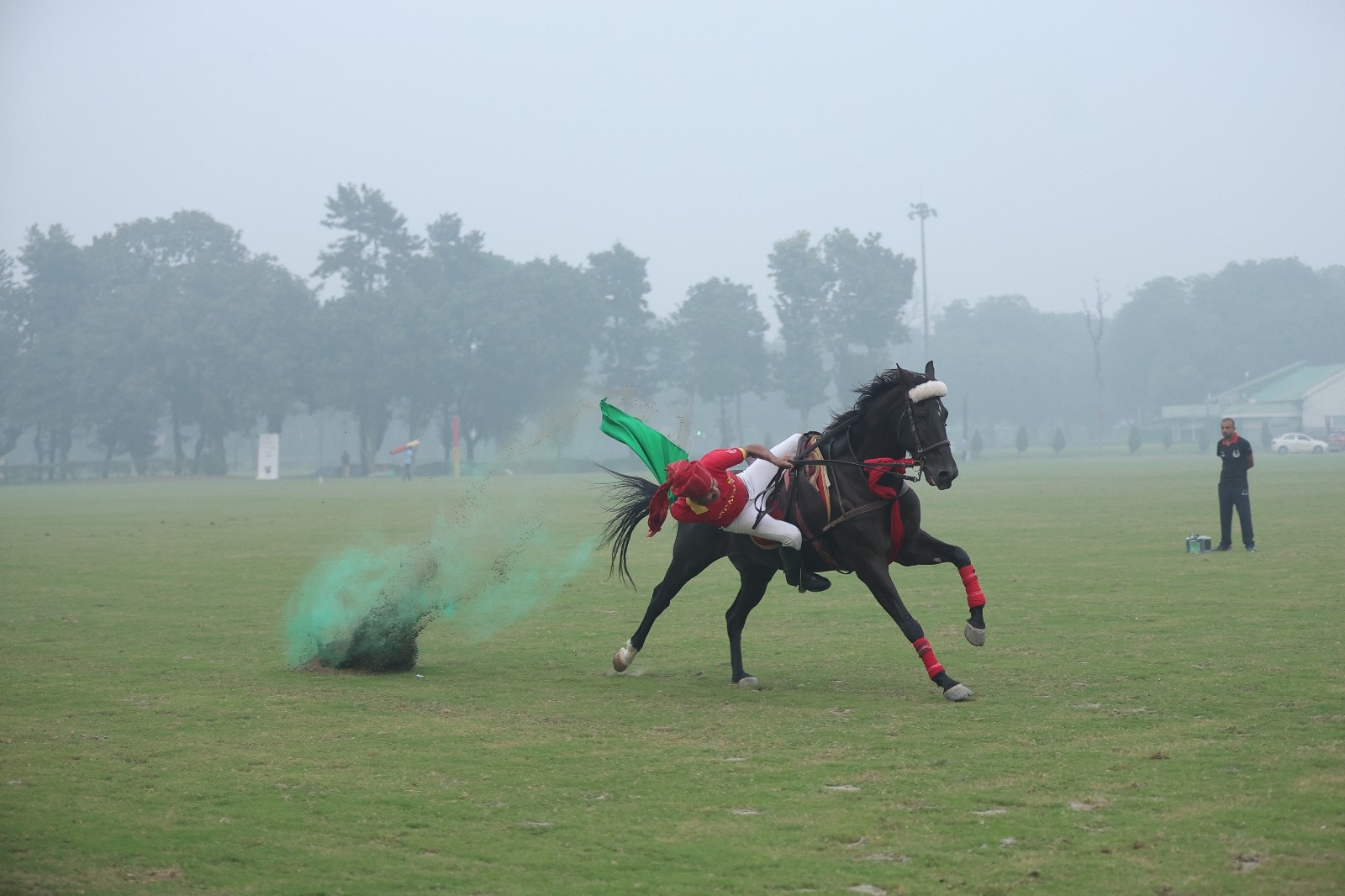
In a thrilling display of equestrian skill and competitive strategy, Jaipur Delta triumphed over Vimal Arion Achievers 7-5 to lift the coveted Sir Pratap Singh Polo Cup at Jaipur Polo Grounds on November 18 in Delhi. Led by Maharaja of Jaipur, Padmanabh Singh, who was named MVP, Jaipur Delta’s players maintained their two-goal lead till the last second of the final round. The event, steeped in tradition, also showcased a stunning equestrian performance by the horsemen of the 61 Cavalry, adding a touch of historic grandeur.
The Maharaja of Jodhpur, Gajsingh Ji II (also known as Bapji), Lt General VM Krishnan, Quarter Master General of the Indian Army, Indian Hotels Company Limited CEO, Puneet Chatwal, actors Sharmila Tagore, Moon Moon Sen and her daughter Raima Sen, Nafisa Ali Sodhi, Lt Gen Rakesh Kapoor, the Deputy Chief of Army Staff and High Commissioner of UK to India, Lindy Cameroon, were among a list of high-profile guests who present in the grandstand to witness a display of raw equestrian skill and competitive spirit at the event hosted by Taj, Umaid Bhavan Palace, Jodhpur and Taj Palace, Delhi.
At the event, IHCL Managing Director and CEO, Mr Chatwal, who rolled the ball and declared the match open, said: “The event embodies the spirit of Jodhpur’s equestrian heritage and our commitment to conserving India’s cultural traditions and preserving the grand palaces, including the magnificent Umaid Bhawan Palace, Jodhpur through ‘Living Legacies of Taj’.”

The Jaipur Delta comprised – Sawai Padmanabh Singh, Hurr Ali, Lt Colonel Vishal Chauhan and Santiago Cruz Marambio, who lifted the trophy. Meanwhile, Vishwarupe Bajaj, the youngest polo player and a class 12 student, Kuldeep Singh Rathore, Abhimanyu Pathak, and Chris Mackenzie, were part of the Vimal Arion Achievers.
Lt Colonel Vishal Chauhan is a serving Indian Army Officer part of the 61 Cavalry, served in Siachen Glacier as well. The 61 Cavalry is the only horse-mounted cavalry regiment in the world, which is still in service.
After the finals, 61 Cavalry showcased the valour of India’s only mounted cavalry regiment still in service. The cavalry’s demonstration of historic battlefield techniques captivated the audience, adding a unique blend of tradition to the day’s competitive spirit.

The Sir Pratap Singh Polo Cup was presented for the first time in 1921 by Maharaja of Jodhpur, Sir Pratap Singh, in commemoration of the visit of The Duke of Connaught to India. The inaugural tournament was played between the teams of Delhi and Patiala in front of Lal Qila, where Delhi secured the win in the 14-goal trophy and the eventual end of Patiala’s team.
Beginner’s Guide To Polo
Polo, often referred to as the “sport of Kings”, comprises four chukkars or rounds, where each player hits the hardball with its mallet to make sure it crosses the goal line. Each chukkar lasts for around 7 minutes, once the ball is on the ground players fight to maintain possession of the ball and players are placed in attack and defence positions for the same. After the end of two rounds, there’s a short break of around 10 minutes before the game progresses to the last two rounds. The Jaipur Delta managed to maintain the lead till the last whistle of the referee and emerge victorious.
A standard polo field is 300 yards long and 160 yards wide, roughly the size of nine football fields. Each end has goalposts, spaced 8 yards apart, with no crossbar making it unique alongside rugby. Each player is given a handicap, similar to Golf, where the lower the number, the better the player is.
Player 1 is the primary attacker, player 2 is responsible for the midfield role, player 3 is known as the strategist and player 4 is the defender. Each player has to ensure it does not cross the opponent’s path, endangering them. After every goal, teams switch sides to avoid any unfair advantage of wind and field to a particular team.
Though ancient polo is believed to have originated in Iran, modern polo has roots in India’s northeast – Manipur. The Guinness Book of World Records in its 1991 publication has recognized the roots of the sport in the state, where it was called Pulu until the British arrived and took the game to the West, later renaming it as Polo. The first polo club in India was established in Assam’s Silchar in 1834, it was later disbanded. The Calcutta Polo Club, established in 1862, is the oldest club still in existence in India.
Topics mentioned in this article



